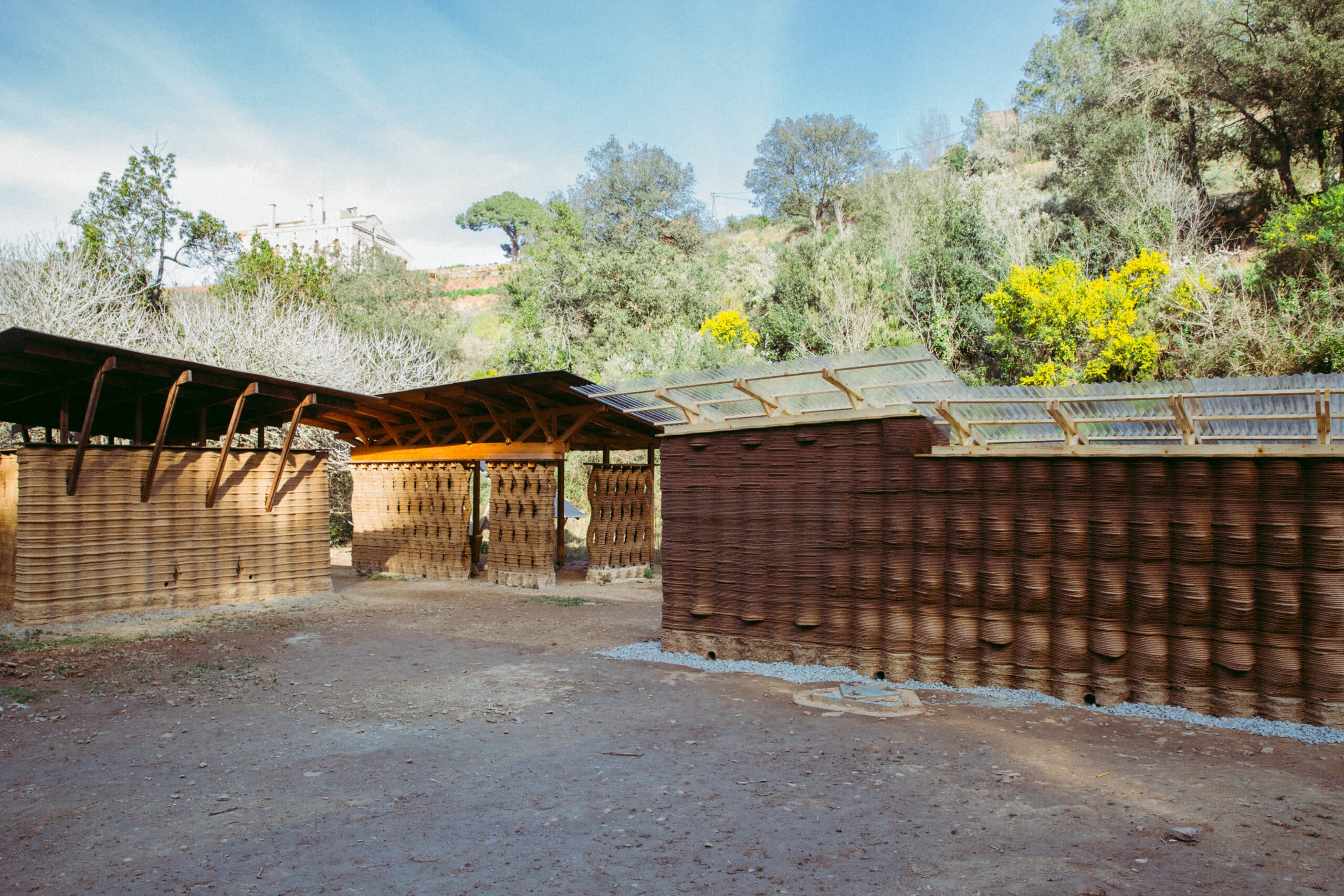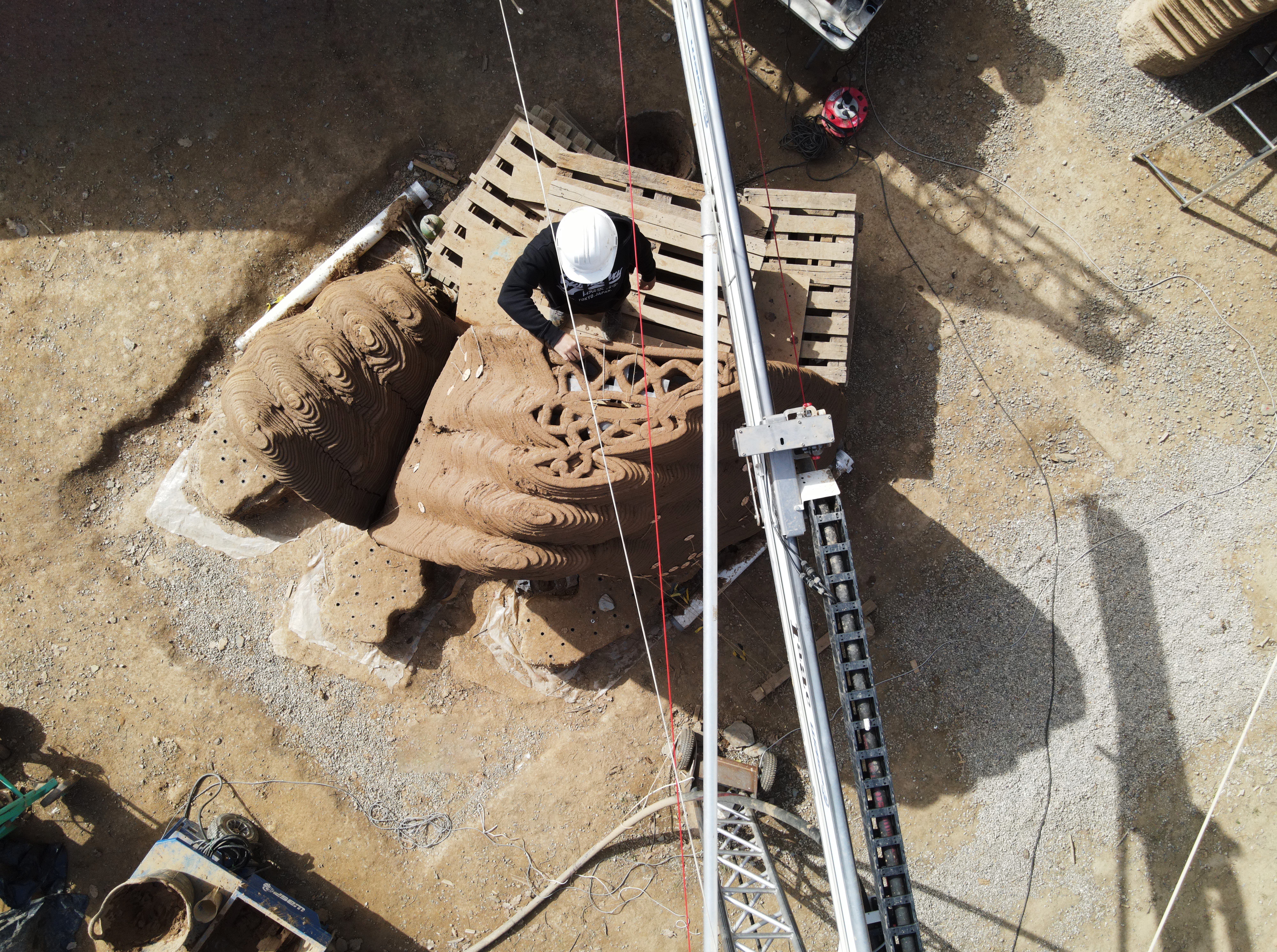Fabrication of large objects for architecture and construction fields with 3D printing is still in the early stages of development and is mainly used for small-scale buildings, research projects, and prototypes. The use of 3D printing in construction can and will offer several benefits such as: faster construction times, lower labor costs, greater design flexibility, and the ability to build structures in remote or hard-to-reach locations. IAAC’s 3DPA programme aims once again to achieve a successful earth 3D printed 1:1 architectural intervention.
As an output from a research process, the construction of a prototype in a relevant environment tends to correspond to a TRL5 (technology readiness level). TRL5 refers to the stage where technology has been demonstrated in a laboratory environment and has been proven to work, but it has not yet been tested in an operational environment. Valldaura Labs will be used as our test ground to demonstrate and validate our hypothesis on a 1:1 scale, by achieving a successful print in this year’s 3DPA Construction Phase. We expect to demonstrate the feasibility of using external timber elements as temporary scaffolding to support deposited earth during its wet state when dealing with cantilevers and overhangs.
Topic of Work
For this year’s 1:1 print, we will use the results from the competition phase, where students were tasked to design a 3mx3m structure primarily built by a cantilever to enclose a space.
The use of earth as a building material is gaining popularity as it is a sustainable and low-cost alternative to traditional building materials. However, printing an overhang with earth poses a set of challenges that need to be addressed. Different techniques such as support materials and specific designs to create more accurate geometries that help reduce the overhangs are a must. In order to achieve the expected results, we will use a combination of both techniques, timber active bent temporary structures will provide support to the overhang during the printing process, ensuring that the structure is stable and does not collapse. To minimize the overhangs of the shape that result from the fifth façade, we will use optimized toolpath design. We will need to carefully plan the path of the 3D printer, taking into consideration factors such as layer thickness and material properties.
For such a complex build, we will need to apply standard organization methods present at any construction project. It will be important to plan and schedule tasks in order to ensure that the printing is completed on time and to the desired quality standards. Breaking the project down into smaller, manageable tasks and then organizing them into a schedule will ensure efficient use of resources, labor, and equipment. Effective scheduling will also help to ensure that all the necessary tasks are completed in the correct order. Identification of potential problems will also help to minimize delays and disruptions during the print.
We will use also some of the downtime when not printing for consolidate some of the elements missing from TOVA to get a finished product. That will help deliver better the message of the feasibility of earth 3D printed buildings to the jury guests visiting the site for our final presentation.
Methodology of work
Students will need to plan ahead and review all needed steps for the construction, including:
- Identification and analysis of the challenges associated with 3D printing earth overhangs in regard to its materiality, mass and rheology.
- Design of the structure to print using previous knowledge acquired during the 3DPA Program, including optimization of geometry, supports planning and material supply line.
- Fabrication and testing of the active bent timber structures. Flexural tests will need to be conducted to evaluate and inform the proposed cantilever designs.
- Development of risk mitigation strategies in several fields, by conducting a series of tests on smaller objects to assess the feasibility of the proposed elements.
- Monitoring and review of risks, updating the plan if needed.
- General planning of the construction phases.
Learning Objectives
At course completion the student will:
- Create a general overview of how a 3D printing construction project is developed.
- Management and scheduling of tasks on site.
- Risk assessment and mitigation.
- File preparation for large scale construction.
- Understand the workflow needed to achieve 1:1 structures.
- Finishing of earth 3D printed buildings.






